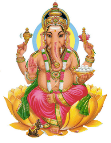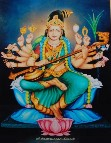NADHADWEEPAM
TRUST & SANGEETHA GURUKULAM

Welcome to our Website
Carnatic Music

Carnatic music, considered to be one of the ancient Indian Art-form originated from Pancha-mukham of Lord Shiva, is widely believed to be bestowed upon mankind through Saint Narada and Lord Hanuman. Its traces are also found in the Sama veda, one among the Four Vedas of Hinduism. Over million years, Carnatic music itself has undergone various phases of evolution; various stalwarts and pioneers have dedicated their heart and soul in disseminating this art form. Whatever one’s personal background and aspirations may be, Carnatic music remains a quest for undiluted aesthetic experience (rasa).
Three basic concepts are essential for daily practice as well as proper appreciation: rāga (tuneful rendition with minute intervals and rich in embellishments), tāla (rhythmic order marked by mathematical precision), and bhāva (expression of thoughts and emotions).
To appreciate how these qualities are being inculcated, listen to the very first song taught for generations and from a very young age – long before a learner grasps the other concepts that distinguish “classical” Carnatic music from its popular counterparts (devotional, folk and film music):
The origins of South Indian music are traced to prehistoric times. Musical instruments form a favorite subject for sculptors, painters and the authors of ancient Tamil and Sanskrit texts. Vocal and instrumental genres have have since coalesced into a single body of compositions and themes. These form the basis for creative elaboration and self-expression.
Several strands have been intertwining throughout Indian music history. According to celebrated Kannada writer, Kota Shivarama Karanth, Indian culture today is so varied as to be called ‘cultures’.*
Music was cultivated by nobility and common people alike. A mere glance at India’s literary heritage, including poetry, drama, mythology and scholarly texts, reveals an ongoing quest for new ideas. The same can be said of performers, instrument makers and skilled amateurs. The resulting “art music” is in fact an amalgam of different “regional” or “indigenous” styles (dēsi). Today it is being studied all over the world on account of its continuity, infinite variety and a rare capacity for self-rejuvenation.
Carnatic music owes its name to the Sanskrit term Karnātaka Sangītam which denotes “traditional” or “codified” music. The corresponding Tamil concept is known as Tamil Isai. These terms are used by scholars upholding the “classical” credentials and establish the “scientific” moorings of traditional music. Besides Sanskrit and Tamil, Telugu, Kannada and Malayalam have long been used for song lyrics.